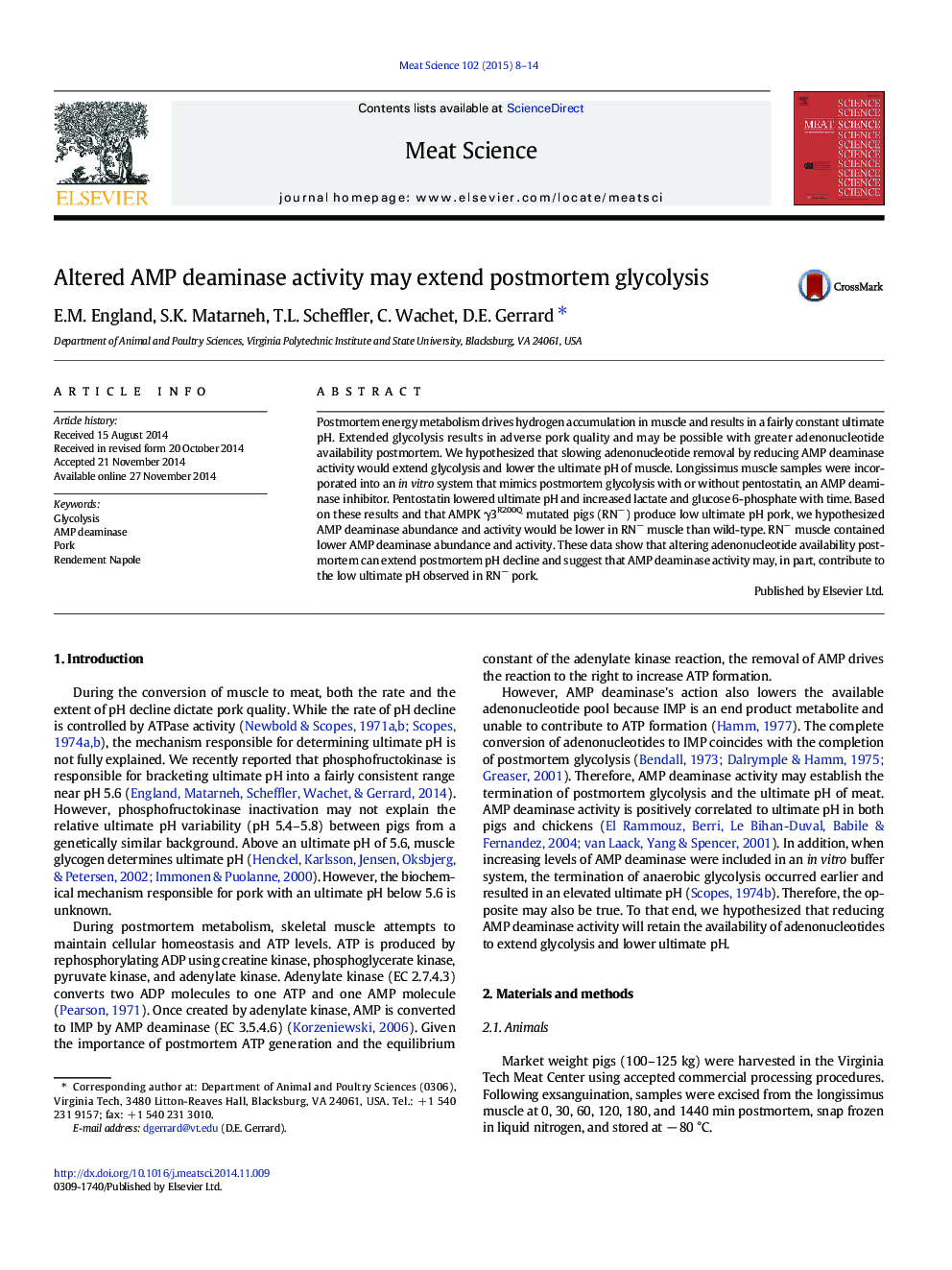| Article ID | Journal | Published Year | Pages | File Type |
|---|---|---|---|---|
| 2449696 | Meat Science | 2015 | 7 Pages |
•Reducing AMP deaminase activity extended anaerobic glycolysis and pH decline in vitro.•Lower AMP deaminase activity may contribute to the low ultimate pH of RN− pork.•An updated working model of the factors controlling postmortem metabolism is included.
Postmortem energy metabolism drives hydrogen accumulation in muscle and results in a fairly constant ultimate pH. Extended glycolysis results in adverse pork quality and may be possible with greater adenonucleotide availability postmortem. We hypothesized that slowing adenonucleotide removal by reducing AMP deaminase activity would extend glycolysis and lower the ultimate pH of muscle. Longissimus muscle samples were incorporated into an in vitro system that mimics postmortem glycolysis with or without pentostatin, an AMP deaminase inhibitor. Pentostatin lowered ultimate pH and increased lactate and glucose 6-phosphate with time. Based on these results and that AMPK γ3R200Q mutated pigs (RN−) produce low ultimate pH pork, we hypothesized AMP deaminase abundance and activity would be lower in RN− muscle than wild-type. RN− muscle contained lower AMP deaminase abundance and activity. These data show that altering adenonucleotide availability postmortem can extend postmortem pH decline and suggest that AMP deaminase activity may, in part, contribute to the low ultimate pH observed in RN− pork.
